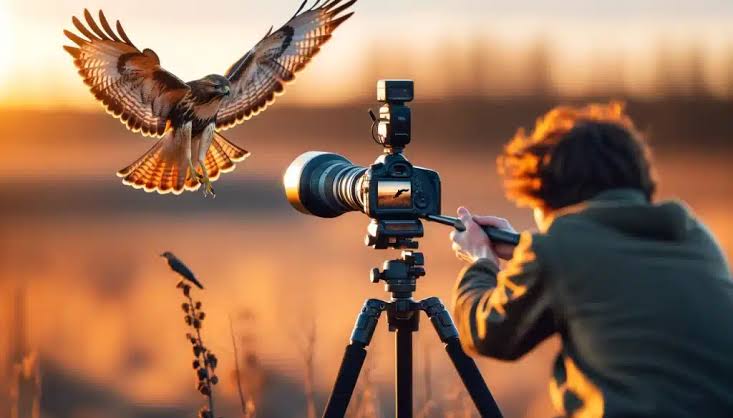Wildlife photography is captivating genre that combines art science and adventure. It requires capturing the essence of animals in their natural habitat. This demands a deep understanding of both photographic techniques and the behavior of wildlife. This extensive guide explores how to effectively capture beauty and majesty of animals. It offers practical advice and tips for aspiring wildlife photographers
Wildlife photography is more than just taking pictures of animals. It involves documenting their behavior. It captures their environment and interactions in a way that conveys their natural beauty and complexity. To excel in wildlife photography one must be patient, observant and respectful of subjects being photographed. This genre also requires strong grasp of technical skills including understanding camera settings, composition and lighting.
Preparation is key to successful wildlife photography. This starts with researching species you intend to photograph. Understanding an animal's behavior is vital. Preferred habitat and daily routines can significantly enhance your chances of capturing compelling images. For instance knowing when and where a particular animal is most active helps you plan your shoot effectively.
Gear selection is another critical aspect of preparation. A long lens is essential for wildlife photography. It allows you to capture close-up images without disturbing animals. Lenses with focal length of 300mm or more are often preferred. Additionally, a sturdy tripod can provide stability. It helps in capturing sharp images especially in low-light conditions
Techniques for Capturing Wildlife
To capture the beauty and majesty of animals, mastering various photographic techniques is essential. Here are some key techniques to consider:
1. Understanding Camera Settings: Knowing how to adjust your camera settings for different scenarios is crucial. Use a fast shutter speed to freeze motion and capture sharp images of animals in action. Adjust the aperture to control the depth of field, allowing you to blur the background and highlight the subject. High ISO settings can be useful in low-light conditions but may introduce noise, so balance this with other settings.
2. Composition and Framing: Effective composition helps to convey the story and emotion of the subject. Follow the rule of thirds to place the subject off-center and create a more dynamic image. Use leading lines, such as the contours of the landscape, to guide the viewer's eye to the animal. Ensure that the background complements rather than distracts from the subject.
3. Patience and Timing: Wildlife photography often requires significant patience. Animals may take time to appear or exhibit interesting behavior. Be prepared to wait quietly and remain as unobtrusive as possible. Anticipating moments of action, such as a bird taking flight or a predator making a kill, can result in powerful and memorable images.
4. Respecting Wildlife: Ethical considerations are paramount in wildlife photography. Avoid disturbing or stressing animals for the sake of a photograph. Maintain a safe distance and use telephoto lenses to minimize your impact. Respect their natural behavior and avoid interfering with their habitat.
Post-Processing and Editing
Once you have captured your images, post-processing is an essential step in wildlife photography. Editing can enhance the visual appeal of your photos while maintaining their authenticity. Here are some tips for effective post-processing:
1. Cropping and Straightening: Crop images to improve composition and remove any distracting elements. Straighten the horizon if needed to ensure a balanced and professional appearance.
2. Adjusting Exposure and Contrast: Fine-tune the exposure to bring out details in both shadows and highlights. Adjust contrast to enhance the image's depth and make the subject stand out.
3. Color Correction: Adjust color balance to ensure accurate representation of the animal and its environment. Correct any color casts that may have occurred due to lighting conditions.
4. Sharpening and Noise Reduction: Apply sharpening to enhance details and ensure that the image appears crisp. Use noise reduction tools to reduce any digital noise that may have resulted from high ISO settings.
Inspiring Examples and Final Thoughts
Wildlife photography has the power to inspire and educate viewers about the natural world. From majestic elephants roaming the savannah to elusive snow leopards in the mountains, each photograph tells a unique story of the animal's life and environment.
Studying the work of renowned wildlife photographers can provide inspiration and insight into effective techniques and compositions. Observing their ability to capture intimate moments and convey the essence of their subjects can help you refine your own approach to wildlife photography.
In conclusion, capturing the beauty and majesty of animals through wildlife photography requires a blend of technical skills, preparation, and respect for the natural world. By understanding the behavior of your subjects, mastering photographic techniques, and committing to ethical practices, you can create compelling and impactful images that celebrate the wonder of wildlife.
